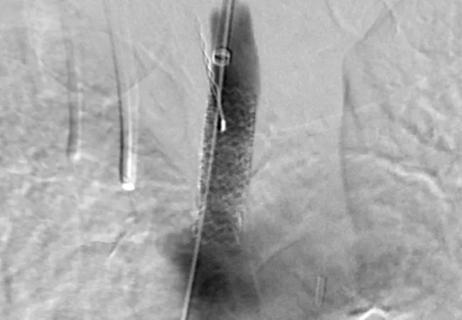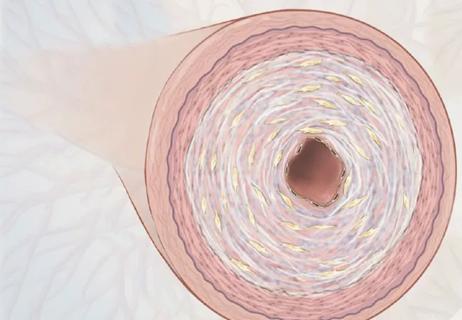Recommendations aim to help more high-risk women become mothers

In a notable twist on conventional wisdom, a new American Heart Association scientific statement on managing pregnancy in patients with complex congenital heart disease (CHD) supports the notion that most women with complex CHD can have a successful pregnancy and normal vaginal delivery. To optimize outcomes, the statement notes, care should be collaborative and involve both a high-risk obstetrician and a cardiologist versed in CHD.
Advertisement
Cleveland Clinic is a non-profit academic medical center. Advertising on our site helps support our mission. We do not endorse non-Cleveland Clinic products or services. Policy
The new guidelines alter the idea that patients with complex CHD should avoid pregnancy out of concern about potential risks to the mother and child.
“This is an excellent statement that provides a much-needed framework for caring for these patients, covering everything from pre-pregnancy counseling to pregnancy care to post-delivery care,” says obstetrician Jeff Chapa, MD, Head of Maternal-Fetal Medicine at Cleveland Clinic.
The guidelines provide a stepped assessment plan for general cardiologists to follow.
“The process makes it easy to assess risk prior to pregnancy, determine the frequency of follow-up needed once the patient becomes pregnant and identify the level of disease that warrants tertiary care,” says Dr. Chapa. “Knowing the changes that will occur can help with risk stratification and provide an idea of how well a patient is likely to do.”
Cardiologist David Majdalany, MD, Director of Cleveland Clinic’s Adult Congenital Heart Disease Center, trained under several members of the writing group behind the AHA guidelines, so he found no surprises in the document. But he’s delighted that a summary of the latest recommendations is finally at the disposal of all providers.
“Until now, we had only bits and pieces of information from various papers primarily written on individual defects,” Dr. Majdalany explains. “These guidelines coalesce what we know in a detailed document that discusses the pros and cons of pregnancy by every class of congenital lesion. This is very helpful.”
Advertisement
The new guidelines’ recommendations align with the experience of Drs. Chapa and Majdalany in Cleveland Clinic’s Cardio-Obstetrics Clinic, where a high-risk obstetrician and a CHD cardiologist co-manage patients, with support from colleagues in virtually every subspecialty available when needed.
The decision of whether to proceed with a vaginal delivery is made jointly. “For example, with defects such as aortic root dilation, the patient is at risk for aortic dissection, so we would suggest avoiding natural delivery in such a case,” Dr. Majdalany notes.
All high-risk patients in the Cardio-Obstetrics Clinic are seen by an obstetrical anesthesiologist and a cardiac anesthesiologist, who determine the optimal and lowest-risk type of sedation needed.
Patients give birth in a Special Delivery Unit (SDU) located adjacent to the cath lab and the cardiac ICU. This leading-edge unit, opened in 2012, ensures that high-risk pregnant women deliver with CHD cardiologists, highly trained staff and advanced resources nearby. After delivery, mother and baby can be sent to the ICU or to the floor, as needs dictate.
The SDU allows the team to optimally manage pregnant women who develop problems such as an arrhythmia, heart failure or a blood clot on a valve. The team delivers babies for about 25 patients a year with heart problems ranging from Marfan syndrome to more complex CHD, such as univentricular heart after Fontan repair and transposition of the great arteries.
Dr. Majdalany cites the example of a patient with severe valvular narrowing from rheumatic heart disease who had undergone multiple valve interventions and whose pregnancy at age 32 was deemed very high-risk. “She was followed regularly throughout her pregnancy and had an uncomplicated delivery in the SDU followed by monitoring in the cardiac care unit for a day,” he says. “She did well and went home as if it was a routine pregnancy.”
Advertisement
In other cases, the SDU’s supportive resources prove critical. “The presence of advanced cardiac surgical support for the SDU is imperative, as intervention may be needed urgently for the newborn or for the mother with heart disease,” notes Hani Najm, MD, Chair of Pediatric and Congenital Heart Surgery. “We’ve had babies born and rolled over to the catheter lab a few hours after birth or to surgery the next morning. The cardiac surgical support staff should be well-versed in neonatal surgery.”
Drs. Chapa and Majdalany note that the new guidelines encompasses many pearls of wisdom that, when strung together, provide an algorithm that can be used to direct care.
It starts with a thorough explanation of the impact of pregnancy on the heart. “Pregnancy increases cardiac output by 50 percent, making it a significant stressor on the heart,” says Dr. Chapa. “Ideally, these patients should undergo an evaluation before conception or early in pregnancy, which may include an echocardiogram, cardiac MRI or stress testing. This assessment allows us to discuss the risks of going forward with the pregnancy and to plan for the pregnancy, delivery and postpartum care.”
Other pearls discussed in detail include:
An important goal of the document is to help physicians understand when a patient should be referred to a high-risk pregnancy center for assessment and, potentially, for management and delivery. And lack of convenience need not be a deterrent for high-risk patients, the physicians note, as women can submit their records and request an evaluation through online services such as Cleveland Clinic’s MyConsult Online Medical Second Opinion.
Advertisement
Advertisement

How our first century has impacted cardiovascular practice

Review offers comprehensive assessment of the landscape for wearables and more

Preserving trust in research requires vigilance and consensus around statistical nuances

Cardiac surgeon Patrick Vargo, MD, reflects on his first year as Cleveland Clinic staff

Centralization would likely bring better outcomes, experts say, but may not be feasible

JACC review makes the case and outlines how to ensure oversight

Editorial lays out best practices from three Cleveland Clinic surgeons

Cardiac manifestations of this autoimmune disorder can be hidden but deadly